Slowness has occurred the last few months. Passive voice. I know the cause is that I’ve focused on learning Italian, but a few years ago when I was on a death march at work, every night I still took at least 30 minutes to work on my Symphony No. 1. Those days haunt me for their dedication under stress.
There’s no excuse.
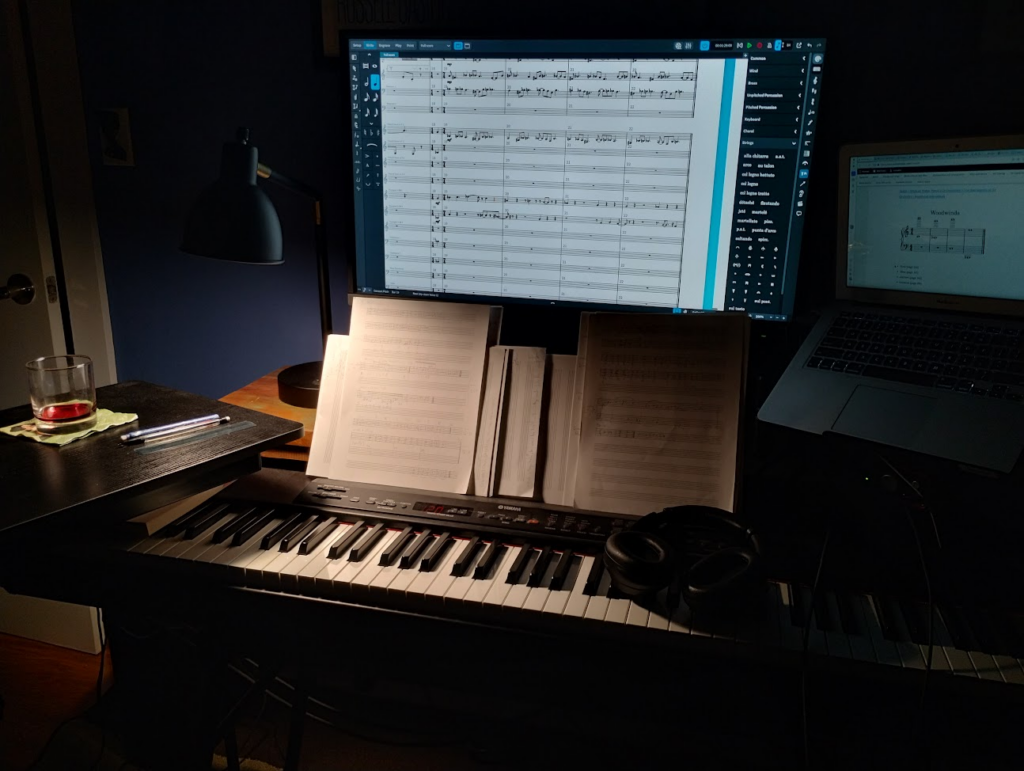
Working on the last few movements of the piece (the last three of the set of 12) has been the challenge that’s always a challenge of endings. I worry about whether I’ve achieved cohesiveness with the entire work–since the composition process has been extended, I may have drifted today away from what I thought over a year ago–and about the quality of the music written. W/r/t cohesiveness: I’ve seen paintings paired with their sketched studies and know from them and from personal experience that the final product can veer in fidelity or imprecision–or intent–from the initial inspiration. And as I approach completion, I need to maintain focus on expression over achievement. None of those routes exclude inspiration or successful (in a certain definition of successful) results.
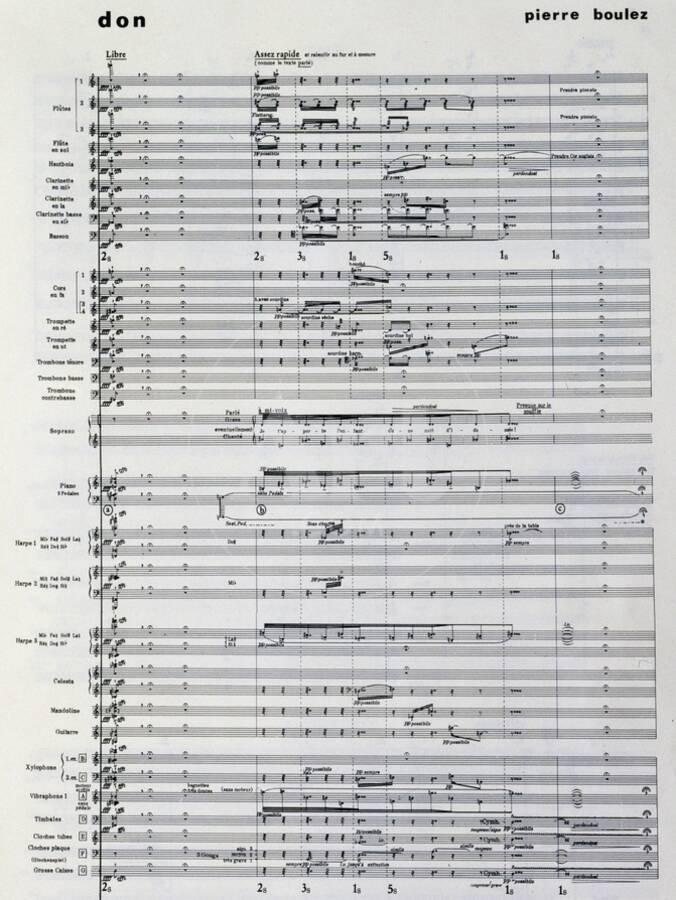
I continue to evolve–for better or etc.–by using more tone color w/r/t my instrument pairings, and I remember learning an oversimplified rule that French composers have always been masters of timbre (even up through Pierre Boulez). Although that oversimplification ignores the Germans (Webern) or Russians (Rimsky-Korsakov) I still have that fact-ish statement in my head. (Teacher’s statements are impossible to shake; I have an absolute reverence for the art and music teachers I’ve had.) I’ve been absorbed in tone color these last couple of months and I now focus more intently to that quality when listening to orchestral works.
The video with the Artitti Quartet practicing with Ferneyhough on his 6th String Quartet is a model of what I’ve tried to achieve [please, let’s ignore that I’m not a Legit Composer and understand that I’m not attempting to pass as one]. His clarity of intent within the bounds of a Very Difficult style has been informative for understanding this general genre of modern music. The interactions between Ferneyhough and the performers presents itself at a weird intersection of both teacher-to-student and equal-to-equal. Infused with absolute respect. Seeing equals of differing skills at the absolute top of their game is, for some reason, so life-enriching.
Anyways.
Following the scores of the Stockhausen and Bussotti and Finnissey works that I love has given me a sense of what’s Possible, humanly, without being absurd. For me it (to a certain definition of “it”) has always been about expression within the bounds of what’s physically possible. For some reason (ahem) my piano stuff was limited in a certain manner of performance and style of composition (interesting side note that amazes me: Finnissy himself performs those absurdly complex works that he writes, and when I transcribed one of them using the MuseScore software, I discovered that his performance was metrically accurate even with unplayable moments like (3:2 + 4) over (5:4 + 7:6). Ignoring the fact that New Complexity composers have said that accuracy is not the point, the accurate point of him achieving such accuracy is stunning.)
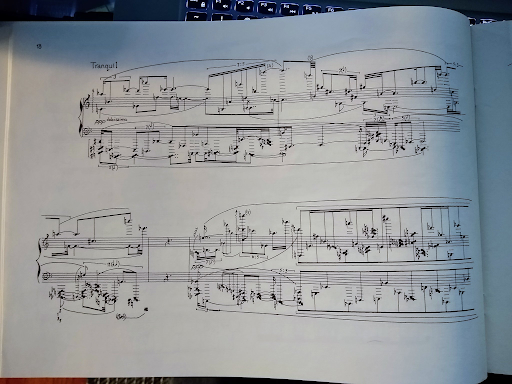
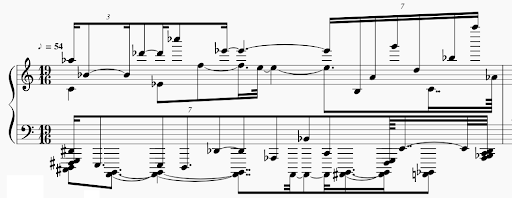
Small side-note: Although the “complexity” part of the name is focused on (as I am right now) there are some lovely, spare sections to be fxound:
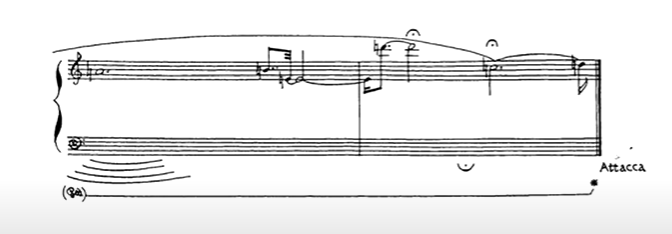
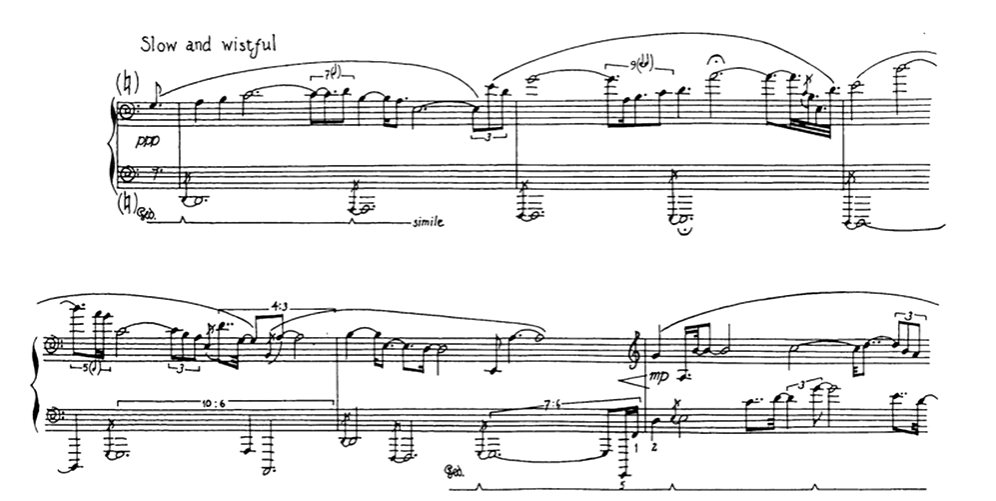
I’ve completed the composition of Figures in a Landscape and am now fleshing out the orchestration. This is the first work that I’ve felt might never be complete as every measure feels like more could be added or taken away. The temptation to add being always stronger and the most risky effort. I hope at least that it doesn’t take another year.